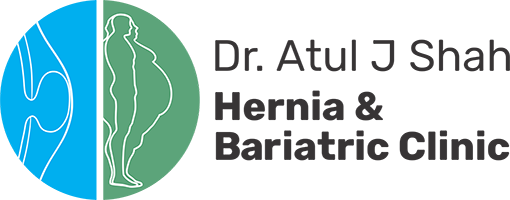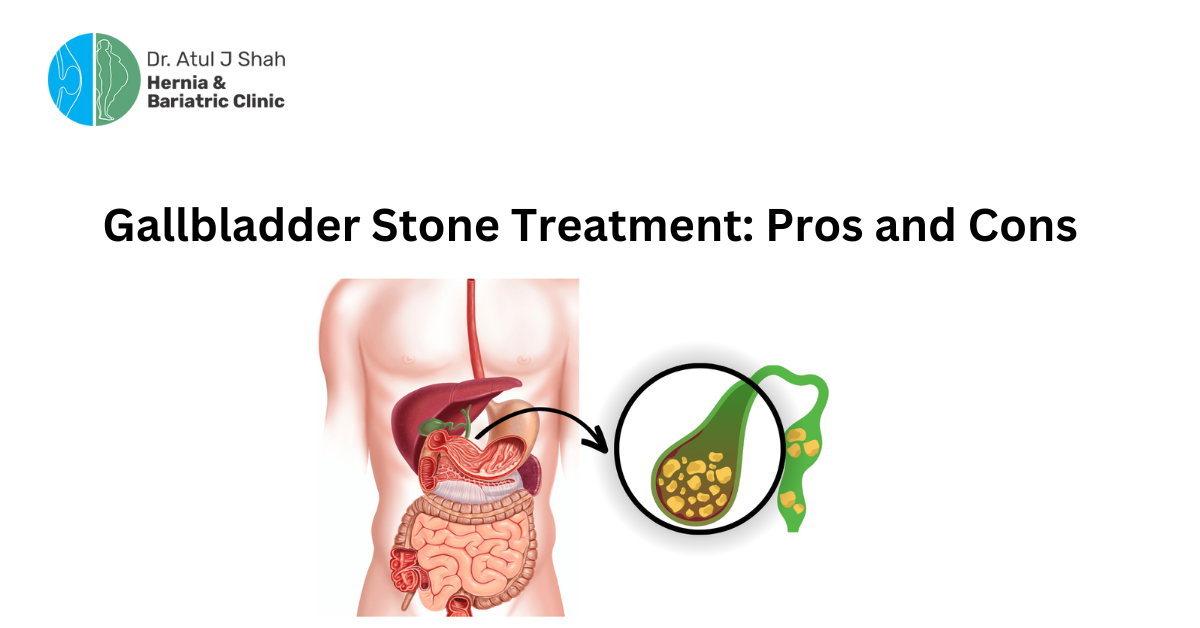Treatment options exist for gallbladder stones, which can be a difficult issue to deal with. The removal of the gallbladder, or cholecystectomy, is a typical procedure for treatment. Two popular methods exist for removing the gallbladder: open surgery or laparotomy and less invasive i.e. laparoscopic cholecystectomy. Although they use different methods and approaches, both surgeries have the same goal: to remove the gallbladder. To assist you decide which treatment is best for you, we’ll go over the benefits and drawbacks of each option.
Gallbladder Stone Treatment Options
Open Cholecystectomy:
This surgical procedure involves making a wide incision in the belly to remove the gallbladder. When other approaches fail, this one is brought into play. Although it provides direct access to the gallbladder, the healing time and scars are lengthier than with laparoscopic surgery. In comparison to laparoscopic gallbladder stone removal, an open cholecystectomy results in more scarring and a lengthier recovery time.
Advantages of Open Cholecystectomy:
- Patients who have a serious infection from gallstone treatment or who have had previous abdominal procedures, where scar tissue can also make laparoscopic surgery problematic, may benefit from an open cholecystectomy.
- In some cases, a surgeon’s ability to see the gallbladder and its surrounding organs more clearly is warranted, which is why they create a larger incision.
- Unlike with laparoscopic surgery, a surgeon has more space to handle unforeseen problems that may arise during surgery, such as bleeding or damage to surrounding organs.
- Open cholecystectomy, in contrast to laparoscopic surgery, does not necessitate a specific technology. This increases its accessibility in areas where such equipment may be hard to come by.
- The majority of surgeons are highly skilled in open cholecystectomy, and the procedure has been a fundament to cholecystectomy since many decades prior to laparoscopic interventions. This could give patients peace of mind and a sense of self-assurance.
Disadvantages of Open Cholecystectomy:
- Compared to laparoscopic cholecystectomy, open cholecystectomy typically causes more discomfort throughout the healing phase due to the larger incision and higher tissue damage.
- The recovery period after an open cholecystectomy is typically lengthier than that of a closed surgery due to the increased invasiveness of the former. It’s possible that you’ll have to spend a few days in the hospital and skip out on your usual workouts for a couple of weeks.
- The risk of infection is higher with open surgery for gallbladder stones than with laparoscopic surgery because of the larger incision required. Antibiotics and proper wound care are usually recommended to reduce this risk.
- Pain is more noticeable than with a laparoscopic procedure because the incision used in an open cholecystectomy is larger. yet the discomfort could also go away after a while.
Laparoscopic Cholecystectomy
A less intrusive option for treating gallstones is laparoscopic cholecystectomy, which involves surgically removing the gallbladder. In comparison to open surgery, it is preferable because of the shorter recovery time, reduced pain, and reduced scarring. Having said that, it might not work in every situation.
Advantages of Laparoscopic Cholecystectomy:
- The smaller incisions allow your body to heal more quickly, which is a major advantage. You will likely be able to resume your regular athletic activities more quickly than after an open surgical operation, which necessitates more recovery time.
- Reducing the length of time spent in the hospital, laparoscopic surgery often allows patients to return home the very same day. This is because the procedure is significantly less intrusive and typically causes less side effects.
- The incisions created during a laparoscopic cholecystectomy are small, usually less than an inch long, making the procedure far less painful. This suggests that you may experience less discomfort after the procedure as compared to an open surgical procedure, which typically results in a larger scar, its management and discomfort.
- There is a reduced chance of complications such as postoperative infections due to the smaller incisions and less intrusive nature of the surgical process.
Disadvantages of Laparoscopic Cholecystectomy:
- Not suitable for everyone:Some patients, especially those with severe gallbladder inflammation or other underlying health issues, will not be good candidates for laparoscopic cholecystectomy.
- The surgeon may have a limited perspective during laparoscopic surgery in comparison to open surgical procedures. Nonetheless, this obstacle is circumvented by means of specific equipment and methods.
- Possible harm to adjacent organs: In extremely unusual instances, the tools utilized during laparoscopic surgical procedures have the potential to accidentally harm adjacent organs, such as the bile duct or intestines. but experienced and skillful trained surgeons know ways to lessen the risk of this happening.
- Inflating the abdomen with carbon dioxide gas during laparoscopic surgery can lead to postoperative gas pain or bloating. The good news is that most people get over this in a few days.
- Problematic from a technical standpoint, laparoscopic cholecystectomy calls for specialized knowledge and abilities from the operating surgeon and his or her support staff. Unfortunately, not every hospital has the necessary staff or training to implement this method.
Also Read : What if gallstones are not treated?
Minimally invasive cholecystectomy
The goal of minimally invasive gall bladder stone treatment is to reduce the amount of physical damage that patients experience. Methods such as robotic-assisted surgery, laparoscopic surgery, and single-incision laparoscopic surgery (SILS) are all part of it.
Advantages of Minimally invasive cholecystectomy:
- These methods are less invasive than traditional open surgeries and will leave your body in better shape thereafter. As a result, you may experience less pain and a speedier recovery.
- As a result of the smaller incisions, you can expect to have less visible scarring and an overall more aesthetic appearance following surgery.
- Surgeons are able to achieve better precision using certain procedures, such as robot surgical operation. This has the potential to make the surgical process more comfortable and efficient.
- Reducing the amount of time spent in the hospital and associated expenses, you may be able to return home the same day as your procedure.
Disadvantages of Minimally invasive cholecystectomy:
- Not all clinical doctors currently have the specialized skills and systems necessary to perform these treatments.
- Not all medical facilities offer these cutting-edge methods, particularly robotic surgery. Many remote communities lack these facilities in their hospitals. Therefore, you may not have access to this type of surgery if you are residing in rural regions.
- The use of minimally invasive surgical techniques, such as robotic surgery, may come with a heftier price tag. Prior to making a decision, evaluate your budget and make sure you have insurance that covers them.
Conclusion
Although gallbladder stones may cause discomfort and inconvenience, there are many therapies that can help manage them. Gallbladder stone treatment options include both open and laparoscopic cholecystectomy surgery , each with its pros and disadvantages. You and your gallbladder specialist can decide on the best course of action for your gallbladder stone procedure by talking about your symptoms, general health, and personal preferences, among other things. In order to make an informed decision regarding your health and fitness, it is important to consult with a gallbladder specialist and voice any questions or concerns you may have.


